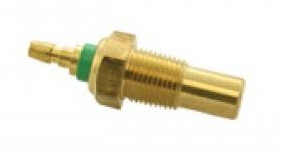how do I calibrate a water temperature gauge?
Discussion
While on Jools rolling road it was noticed that the car temperature gauge was reading very high compared to the readings on the rolling road VDU and confirmed by the cut in /out of the electric water pump and fan controller.
When the Rolling road and fan controller were reading 85degC the temperature gauge was reading halfway through the red (approx. 110degC) I believe the oil temperature settled at about 90.
So I think I have the wrong sender but don't know which would be the correct one. Would it be possible to fit a resistor instead? If yes has anyone have an adjustable rheostat I can borrow? I'm in Tesside
When the Rolling road and fan controller were reading 85degC the temperature gauge was reading halfway through the red (approx. 110degC) I believe the oil temperature settled at about 90.
So I think I have the wrong sender but don't know which would be the correct one. Would it be possible to fit a resistor instead? If yes has anyone have an adjustable rheostat I can borrow? I'm in Tesside
Is the gauge controlled from a basic sender unit similar to this? .....

What colour band do you have on the sender unit? Try a different colour, going through some old posts green seems popular?
are you using the sender (did it work correctly) from the old Cozzie engine?
Old post here... clicky ... mentions soldering a variable resistor in series

What colour band do you have on the sender unit? Try a different colour, going through some old posts green seems popular?
are you using the sender (did it work correctly) from the old Cozzie engine?
Old post here... clicky ... mentions soldering a variable resistor in series

If its a Rover Engined car you've got, I recommend you take time to read this thread >>https://www.pistonheads.com/gassing/topic.asp?h=0&f=8&t=1816431&i=0
'Chimpongas' aka Dave Byron did some exhaustive research and testing and the upshot is to fit a new Caerbont temperature sender rather than mess about with resistors. I did the change last week which took 15 mins max and if I can do it anyone can.
Good luck.
'Chimpongas' aka Dave Byron did some exhaustive research and testing and the upshot is to fit a new Caerbont temperature sender rather than mess about with resistors. I did the change last week which took 15 mins max and if I can do it anyone can.
Good luck.
Coolant temperature is hot at the cylinder walls, cooler at the radiator and therefore randomly intermediate temperatures In-between. Getting an accurate temperature is meaningless because you are measuring at some random point between hot and cold. The only relatively important temperature is the cylinder walls and there's no simple way to measure there.
bobfather said:
Coolant temperature is hot at the cylinder walls, cooler at the radiator and therefore randomly intermediate temperatures In-between. Getting an accurate temperature is meaningless because you are measuring at some random point between hot and cold. The only relatively important temperature is the cylinder walls and there's no simple way to measure there.
Agreed, and I have an electric water pump and ecu, this has it's own water temperature sender mounted adjacent to the gauge sender. Also the Emerald engine ecu has it's own temperature sender) all 3 mounted about 20mm apart on the same pipe from the head to the radiator, the gauge being the last in the row. On the rolling road the Emerald was showing what I would expect in raising to just over 90 and the rad fans bringing it back to just under 85 (the water pump and fan control ecu were set at these). The gauge reading about 110So all in all the gauge is only an indication but I'd like it to be somewhere close at the top end of the safe range
Gassing Station | General TVR Stuff & Gossip | Top of Page | What's New | My Stuff




